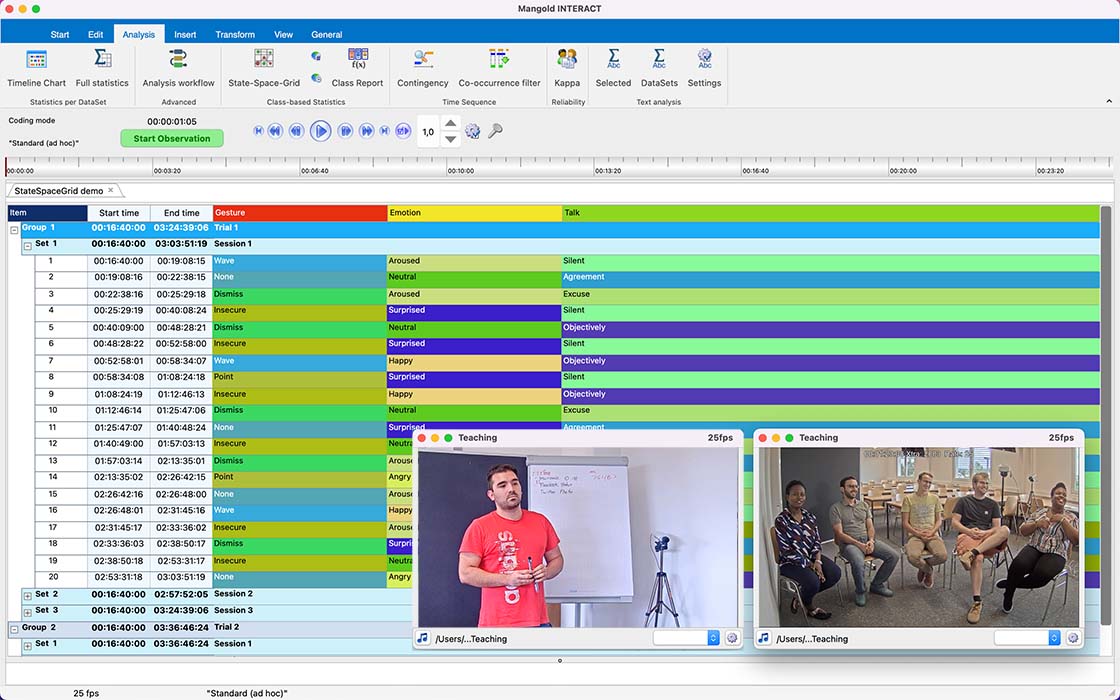· INTERACT Tutorials · 3 min read
Choosing the Right Observation Method in INTERACT
This tutorial guides researchers in identifying the most effective observation method within INTERACT, considering the nature of the research question and the characteristics of the data being gathered.

Choosing the Right Observation Method in INTERACT
This tutorial guides you in selecting the appropriate observation method in INTERACT based on your research goals and data type.
Understanding Observation Methods
Observation methods are systematic approaches to collecting data. The choice depends on your research questions and the nature of the behavior you’re studying.
Observation Methods in INTERACT
INTERACT supports several common observation methods:
- Event Sampling: Codes are logged only when specific events of interest occur. This method is ideal for analyzing behaviors with clear start and end points, such as discrete actions or interactions.
- Time Sampling: Codes are logged at predetermined time intervals, providing a snapshot of the observed behavior at specific moments. This is useful for observing ongoing behaviors and states that may not have clear boundaries, such as emotional expressions or activity levels.
- Continuous Sampling: The presence or absence of behaviors is continuously recorded throughout the observation period, offering a detailed, uninterrupted account of the behavior.
Factors to Consider
- Research Questions: What are you trying to understand about the behavior? Do you need to know when events happen, the prevalence of behaviors over time, or a detailed, continuous record?
- Nature of the Behavior: Is the behavior clearly defined with distinct start and end points, ongoing and fluctuating, or do you need to capture subtle changes over time?
- Complexity: How many different behaviors are you observing simultaneously? Time sampling or continuous sampling may be better suited for situations where multiple behaviors need to be tracked concurrently.
Example Scenarios
- Child-Parent Interaction: If you’re interested in specific interaction patterns, like instances of sharing or conflict, event sampling would be suitable.
- Classroom Behavior: To analyze student engagement levels over a lesson, time sampling could be used to record engagement levels at regular intervals.
- Animal Behavior: To study an animal’s movement patterns and posture changes in detail, continuous sampling would be appropriate.
Getting Started
- Define Your Research Question: Clearly articulate what you’re trying to investigate.
- Consider the Behavior: Analyze its characteristics and how it unfolds over time. Consider whether the behavior is sequential, incoherent, or a combination of both.
- Choose a Method: Select the observation method that best aligns with your research question and the nature of the behavior.
- Set Up INTERACT: Configure the appropriate settings in INTERACT based on your chosen method. For example, if you’re using time sampling, you’ll need to define the time interval for your observations.
Remember that INTERACT offers flexibility. You can even combine different methods within the same study to get a comprehensive understanding of your data. You can use separate passes through your video to code different aspects of the data using various methods. For instance, you can code behavioral events as they occur in one pass and then create predefined intervals to judge the emotional state in another pass.




